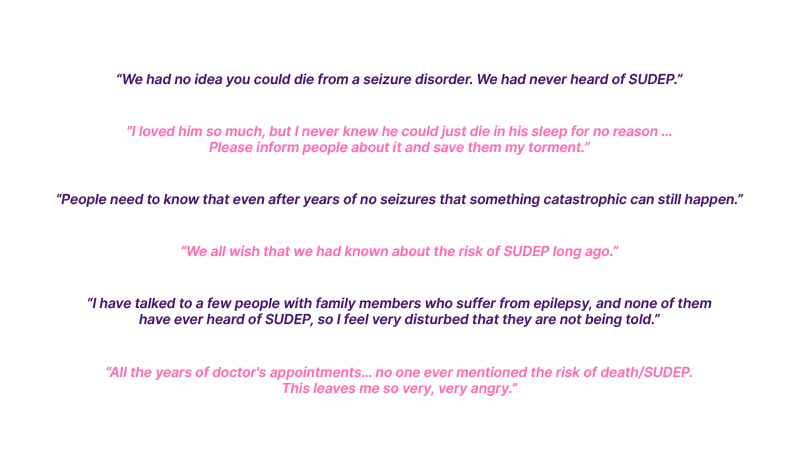BACKGROUND
Sudden unexpected death in epilepsy (SUDEP) is the most significant complication of epilepsy, with an incidence of 1.2 per 1,000 patient-years.1 The major source for SUDEP case series has been medical case record review;2,3 however, most deaths occur at home, with family and friends as witnesses to the event or to the scene of death. The authors, therefore, aimed to describe SUDEP characteristics using reports of deaths from third parties and to explore this reporting as a sampling technique.4
MATERIALS AND METHODS
The authors collected characteristics of the deceased and narratives surrounding death via the SUDEP Action UK Epilepsy Deaths Register (EDR), a dual-purpose record for research and support to bereaved families. They included adults and older adolescents if they had a certified cause of death and a narrative consistent with definite or probable SUDEP. The authors extracted demographics, details of follow-up, events leading to death, and attitudes towards the condition and treatment during life from third-party reporters between 2013–2024.
RESULTS
The study identified 407 SUDEP cases. Ages ranged from 15–85 years, with the majority (76% of cases) occurring between the ages of 19–49 years; 59% were male. Most cases found were in the prone position (63%), and death most frequently occurred during sleep (69%). SUDEP was not recorded as the cause of death in 24.8% of cases, despite a consistent reporter account. An increased frequency of SUDEP was observed with longer epilepsy duration, with 41% diagnosed more than 10 years prior to death.
Anti-epileptic medication was prescribed in 91% of cases, with 24% reported as sometimes forgetting to take their medications. Sixteen percent of cases lived alone, and 16% of deaths were witnessed.
There was no significant association between seasonality or deprivation and cases of SUDEP, though increased deprivation was associated with home as the place of death (11.6% more) and with medication concerns (13.2% more). Fifty-one percent of reporters did not know that someone could die of epilepsy, and the impact of this can be seen in Table 1.

Table 1: Quotations from reporters regarding their feelings towards the communication of sudden unexpected death in epilepsy risk, both prior to and after the deceased’s death.
SUDEP: sudden unexpected death in epilepsy.
CONCLUSION
Third-party death reports are an effective, underutilised tool to sample SUDEP deaths, which may currently be missed by conventional mortality records. Consistent with previous population studies, SUDEP in the EDR was seen more frequently in young adults, those with longstanding epilepsy, during sleep, and most often found in a prone position.
Most of the SUDEP cases in the EDR had no medication concerns, did not live alone, and were under specialist follow-up, factors that are recognised as lowering risk. This heterogeneity across the spectrum of SUDEP deaths should prompt clinicians to openly discuss SUDEP risk with all people with epilepsy.






